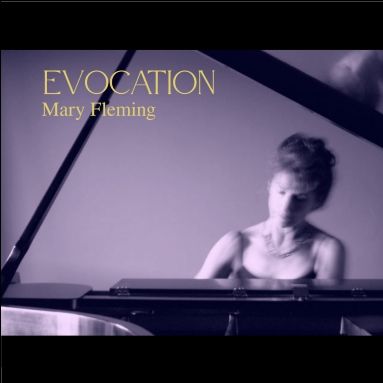Evocation Album NotesThe turn of the 20th Century in Europe was an extraordinary time for classical music. Composers there were influenced by music from all over the world and there was innovation with musical imagery. The selections on this album each evoke something unique coming from a variety of sources: American Jazz, Spanish and Asian music, the visual arts and quotations of themes from other composers. 1. El Puerto (1906) from Iberia, by Albeniz (1860-1909)El Puerto is a town in Andalusia. The music of this piece evokes one of the many annual festivals there, which are filled with song and dance. It is a classic zapateado dance rhythm. 2. La serenade interrompue (1910) from Preludes Bk 1 by Debussy (1862-1918). 'The Interrupted Serenade' for me is a scene with a guitarist with a soulful serenade who persists even with many interruptions: some very intrusive and some off in the distance. Albeniz had just died when Debussy wrote this and some think this was a tribute to him. It was Albeniz's 'serenade' that had been 'interrupted'. 3. Evocation (1906) from Iberia, by Albeniz For me this piece conjures a sense of Spain and the richness of all of the cultural influences there. Albeniz referred fondly to the music of Spain as being 'like the sun, like the blackbirds or like the nightingales of its gardens.' 4. L'isle joyeuse (1904) by Debussy Inspired by the painting 'Embarkation to Cythera' by Watteau, this piece evokes the excitement of the journey on the ship in the wind and on the waves, and the anticipation of being on the Isle of Joy. CHILDREN'S CORNER (1906-1908) Tracks 5-10Debussy dedicated 'Children's Corner' to his two-and-a-half year old daughter, Claude-Emma, who Debussy nicknamed Chouchou. It is an evocation mostly of her imaginative play with her toys and her wide-eyed world as a child. The English titles are a nod to her world with her English nanny. 5. Doctor Gradus ad Parnassum'Gradus ad Parnassum', the steps to higher learning, was a popular book of Etudes by Clementi for piano study at the time. Debussy was undoubtedly imagining Chouchou excelling at the piano and poking a little fun at the pompous title of the popular book and called this 'Doctor' Gradus ad Parnassum. 6. Jimbo's Lullaby It seems that Chouchou had to tell quite a long bedtime story to finally have her stuffed elephant, Jimbo, fall asleep. Jimbo seems to have a part written exclusively for him made up of two notes next to each other because his paws were too wide to play one note at a time. 7. Serenade for the doll Chouchou performs for her china-doll with Asian influenced singing and strumming. The frequent changes in mood add a delightful childlike character to the piece. 8. The snow is dancing Mesmerizing patterns of the falling snow with bells tolling and bird calls in the distance. 9. The little shepherd This is a poetic musical short story in four chapters about the shepherd doll in Chouchou's toybox. 10. Golliwogg's cake-walk The cake-walk was one of the early jazz dances to be a rage in Paris, so Debussy wrote his own for Chouchou. The middle section pokes a fun at Wagner with the opening theme from 'Tristan' with exaggerated importance, followed by some snickering. The films I have seen of the original cake-walks were fast tempos so I had fun taking a more spirited tempo than usual for this piece in honor of the originals. |


